Table of Contents
ToggleIn a world where software bugs lurk like ninjas in the shadows, Endbugflow swoops in like a superhero, ready to save the day. But how does this magical tool actually work? Spoiler alert: it’s not powered by unicorns or fairy dust, though it might feel like it.
Endbugflow simplifies the chaotic life of developers by automating the bug-tracking process. It captures issues, organizes them, and helps teams prioritize fixes, all while keeping the workflow smooth and efficient. Imagine a workplace where bugs are handled faster than a cat meme goes viral. That’s the promise of Endbugflow, and it’s time to dive into the nitty-gritty of how this software turns bug-hunting into a breeze.
Overview of Endbugflow Software
Endbugflow simplifies the bug-tracking process for software development teams. It automates issue capture and organization, reducing manual entry and streamlining workflows. Teams can log bugs swiftly with features that allow direct input from various integration points.
The software categorizes issues based on severity, ensuring critical bugs receive immediate attention. Users access a dashboard that provides insights into ongoing issues and resolves prioritization challenges. Automated notifications keep team members updated on changes, fostering timely responses.
Endbugflow integrates seamlessly with project management tools, enhancing collaboration across teams. This integration ensures a centralized view of bug reports alongside ongoing tasks. Team members can track progress, assign responsibilities, and monitor fixes without switching between platforms.
Reporting capabilities enable users to generate detailed analytics on bug trends. Teams can review data on recurring issues, time-to-fix metrics, and team workload. Such insights drive informed decision-making, allowing teams to allocate resources effectively.
Customization options in Endbugflow cater to specific workflows. User-defined classifications tailor the bug-tracking experience, aligning with organizational standards. Teams can adapt the tool to meet unique project demands while maintaining efficiency.
This software transforms the often chaotic process of bug-hunting, promoting a structured approach. Users benefit from enhanced traceability and transparency, resulting in a more efficient bug resolution process. Overall, Endbugflow empowers development teams to prioritize and manage software issues effectively.
Key Features of Endbugflow

Endbugflow offers essential features that enhance bug-tracking efficiency. These capabilities streamline processes and foster better collaboration within development teams.
Workflow Automation
Workflow automation significantly improves bug management efficiency. By capturing and organizing software issues automatically, this feature reduces manual entry tasks. Teams can log bugs quickly through multiple integration points. Issues get categorized based on severity, allowing critical problems to receive immediate attention. Automated notifications keep teams informed and prompt timely responses. Dashboards provide real-time insights into ongoing issues, which fosters proactive management days ahead of deadlines.
Enhanced Collaboration
Enhanced collaboration becomes possible through seamless integration with project management tools. Users can access a centralized view of bug reports alongside ongoing tasks. Tracking progress becomes straightforward when responsibilities get assigned directly from the platform. This integration prevents teams from switching between multiple applications, saving time and effort. Additionally, shared visibility into bug status encourages open communication and collective problem-solving. Reporting capabilities enable teams to analyze trends, allowing for team-driven improvements and informed decision-making for future projects.
How Endbugflow Works
Endbugflow streamlines the bug-tracking process through an intuitive interface and robust integration capabilities. It empowers development teams to manage software issues effectively by simplifying workflows and enhancing collaboration.
User Interface and Experience
The user interface of Endbugflow prioritizes ease of use and accessibility. Developers can quickly log bugs without unnecessary navigation through complex menus. Visual elements guide users efficiently, enhancing the overall experience. Customizable dashboards display critical information at a glance, aiding in quick decision-making. Enhanced functionality includes filtering and sorting options, allowing users to view bugs based on severity or status. Notifications keep teams informed of updates, ensuring swift responses to pressing issues. Overall, the design reflects a commitment to improving the problem-solving process.
Integration with Other Tools
Seamless integration is a hallmark of Endbugflow. It connects effortlessly with popular project management tools, creating a centralized platform for all bug-related activities. Users track tasks alongside bug reports, which enhances collaboration and minimizes miscommunication. This integration supports real-time updates, fostering transparency among team members. Each team can customize connections based on their specific workflows. Reporting features across integrated platforms provide valuable insights into trends and performance, enabling effective resource allocation. The result is a cohesive environment that streamlines bug management processes.
Benefits of Using Endbugflow
Endbugflow greatly enhances efficiency in bug management. Increased automation simplifies the capture and organization of software issues, allowing teams to focus on resolutions. Streamlined workflows eliminate unnecessary manual entry, thus expediting the logging of bugs.
Enhanced collaboration becomes evident through seamless integration with project management tools. Centralized views deliver immediate access to bug reports alongside ongoing tasks. Responsibility tracking remains straightforward, as teams can easily assign tasks and monitor fixes.
Robust reporting capabilities provide valuable insights into trends and metrics. Teams analyze bug frequency and time-to-fix data for informed decision-making. Data-driven resource allocation becomes simpler, improving overall productivity.
Customization options cater specifically to unique workflows. User-defined classifications align closely with organizational practices, offering tailored solutions. Customizable dashboards facilitate quick views of critical information, ensuring team members stay on track.
Another significant benefit includes automated notifications that keep everyone informed. Timely updates support swift responses to ongoing issues, enhancing responsiveness.
Overall, Endbugflow transforms bug-tracking into a structured and transparent process. Prioritization of critical bugs ensures they receive immediate attention, fostering a proactive approach to software maintenance.
Endbugflow revolutionizes the bug-tracking landscape by simplifying processes and enhancing collaboration. Its automation features significantly reduce the manual workload for developers while ensuring critical issues receive the attention they deserve. With seamless integration into project management tools teams can maintain a centralized view of tasks and bug reports, promoting effective communication and swift resolution.
The intuitive interface and customizable dashboards empower users to navigate the software effortlessly. Robust reporting capabilities provide valuable insights that drive informed decision-making. By transforming bug management into a structured process Endbugflow not only improves efficiency but also fosters a proactive approach to software maintenance. This tool is essential for teams looking to elevate their bug-tracking strategies.







